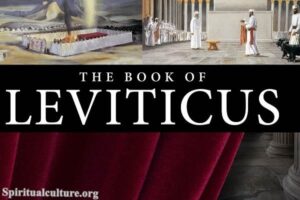Throughout history, human beings have gazed upon the brokenness of the world and asked: Can this be mended?
In Judaism, the answer is not only yes — it is our sacred responsibility.
This calling has a name: Tikkun Olam, meaning “repairing the world.”
But Tikkun Olam is more than a phrase — it is a deep spiritual principle rooted in Jewish theology, ethics, and purpose.
As Spiritual Culture, we invite you on a journey through this profound Jewish idea. We’ll explore where it comes from, how it has evolved, and what it means for anyone seeking to bring light into darkness — whether through acts of justice, compassion, or healing.
The Origins of Tikkun Olam
A phrase with ancient roots
The Hebrew phrase Tikkun Olam (תיקון עולם) literally means “repair of the world.” It first appears in early rabbinic texts in the context of legal reform — ensuring that Jewish law functions in a way that upholds justice and the common good.
For example, in the Mishnah (Gittin 4:2–9), certain legal rulings are described as being made “mipnei tikkun ha’olam” — for the sake of repairing the world — to prevent social harm or injustice.
So from the start, Tikkun Olam pointed not just to ritual piety but ethical repair — society must be shaped in a way that reflects divine justice.
Lurianic Kabbalah and Cosmic Repair
A mystical worldview of broken vessels and divine sparks
In the 16th century, the concept of Tikkun Olam took on cosmic significance in the teachings of Rabbi Isaac Luria, the great Kabbalist of Safed.
According to Lurianic Kabbalah, at the beginning of creation, the divine light was poured into special vessels — but they shattered, scattering sparks of holiness throughout the material world. The result was a fractured universe — spiritually and morally incomplete.
The human role? To gather and elevate these divine sparks through acts of goodness, mitzvot (commandments), prayer, and ethical living.
“Each mitzvah,” taught the Kabbalists, “releases divine light and restores harmony.”
Tikkun Olam, in this mystical sense, is a cosmic partnership — humans join God in repairing the fabric of creation.
Rabbinic Roots: Law, Order, and Society
Building a just world through halakhah
In Rabbinic Judaism, the emphasis on law (halakhah) is not simply about obedience — it’s about constructing a world of justice and compassion.
The rabbis taught that ethical living is central to divine purpose. To fulfill the Torah is to mend the world — not only spiritually, but socially:
- Defending the vulnerable
- Treating workers fairly
- Showing mercy to animals
- Honoring the stranger and the poor
Tikkun Olam is woven into Jewish law not just in lofty ideals, but in daily, grounded practice.
As it is written:
“Justice, justice shall you pursue” — Deuteronomy 16:20
And again:
“Learn to do good; seek justice, correct oppression” — Isaiah 1:17
Tikkun Olam as Social Justice
From prophetic vision to public action
In the 20th century, especially in American Judaism, Tikkun Olam evolved into a powerful ethic of social justice.
Inspired by prophetic voices like Amos and Isaiah, modern Jews began to apply the call to Tikkun Olam to issues like:
- Civil rights
- Poverty alleviation
- Environmental protection
- Immigration and refugee aid
- Interfaith cooperation
Organizations such as Repair the World, American Jewish World Service, and many synagogue-based programs make Tikkun Olam a lived practice.
This form of Tikkun Olam asks: What does it mean to be God’s partner in a broken world? And it answers with bold action.
Healing the Soul and Healing the World
Inner transformation is not separate from global transformation
Tikkun Olam is not just about “fixing others” — it begins within the soul.
Jewish spirituality teaches that the world is healed when individuals:
- Confront their own ego and injustice
- Cultivate humility and empathy
- Repair relationships
- Live with integrity
The Talmud (Sanhedrin 37a) teaches:
“Whoever saves one life, it is as if they saved an entire world.”
This speaks not only to external rescue, but internal rebirth.
To repair the world is also to become whole inside — and from that wholeness, heal outward.
Modern Movements and Global Ethics
Tikkun Olam beyond Judaism
Today, Tikkun Olam has become a rallying cry not only within Judaism but beyond it — adopted by interfaith groups, ethical organizations, and environmental movements.
Its appeal is universal:
The idea that the world is wounded, and that each of us has a role in healing it, transcends religion.
Still, in Jewish life, it remains uniquely grounded in:
- Covenant (brit) — a sacred responsibility
- Mitzvot — specific acts of justice and compassion
- Hope — that healing is always possible, even in exile, even in darkness
As Rabbi Abraham Joshua Heschel once said:
“In a free society, some are guilty, but all are responsible.”
Tikkun Olam in Daily Life
Small acts, eternal meaning
You don’t have to be a rabbi, activist, or mystic to engage in Tikkun Olam.
Everyday acts of kindness and conscience — when done with intention — are part of this repair:
- Visiting the sick
- Feeding the hungry
- Speaking up against injustice
- Choosing ethical business practices
- Caring for the earth
- Teaching children compassion
In Judaism, no deed is too small, and no person is too insignificant to be part of God’s great mending.
Challenges and Critiques
Misuse, vagueness, and spiritual dilution
Some scholars and rabbis have raised concerns about how Tikkun Olam is used today:
- It’s sometimes reduced to a buzzword with little connection to Jewish tradition.
- Others critique it for becoming too political, or disconnected from mitzvah-based life.
- Still others warn that a focus on “repairing the world” can distract from self-repair.
The challenge, then, is to balance action with depth, justice with holiness, and worldly repair with soul restoration.
True Tikkun Olam must be anchored in Torah, infused with humility, and motivated by love, not just ideology.
A Universal Invitation to Repair
Tikkun Olam is not simply an idea — it is an invitation.
It calls us to see the cracks in the world not as a reason to despair, but as an opportunity to shine light.
It invites every soul — Jewish and non-Jewish, religious and secular — to ask:
Where is there brokenness in my world?
How can I bring healing, wholeness, and hope?
As Spiritual Culture, we believe the essence of Tikkun Olam lies in this truth:
🌍 The world can be repaired.
🕯 You are part of that repair.
💫 And every act of love brings the world one step closer to wholeness.
Reflect and Reimagine
Tikkun Olam reminds us that healing is possible — in society, in spirit, and in creation itself.
It invites us to live not passively but redemptively — to shape a world more just, more kind, more whole.
So reflect:
- What part of the world is calling for your attention?
- What part of your inner world needs healing first?
- What one act — today — can move the needle toward light?
Let this not just be a concept you read, but a path you walk.
With each step, you participate in the ancient and ever-new mission of repairing the world.
And in doing so, you join hands with generations — past and future — who whispered, wept, and worked toward a better world.
This is Tikkun Olam.
This is your invitation.




